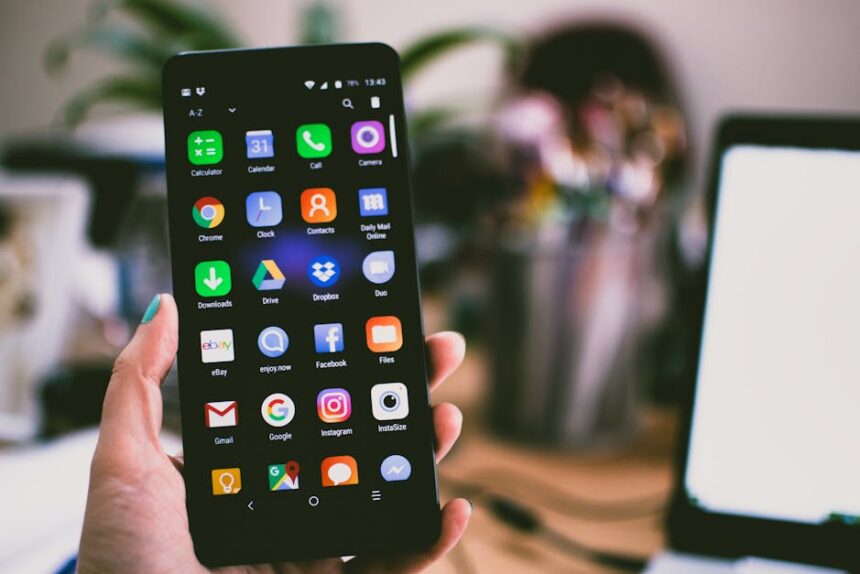Understanding the Core Principles of Profitable Instagram Ad Scaling
Scaling Instagram ad campaigns profitably demands a strategic shift from simply increasing spend to optimizing every facet of your ad ecosystem. It’s not merely about pushing more budget through the system but about intelligently expanding reach while maintaining or improving Return on Ad Spend (ROAS). Before embarking on aggressive scaling, a foundational understanding of your current campaign’s performance, profitability metrics, and underlying infrastructure is paramount. A campaign is ready for scale only when it has demonstrated consistent profitability and stability at a smaller spend level, indicating a validated offer, strong creative, and effective audience targeting. Without this initial validation, scaling merely amplifies inefficiencies and losses.
Profitability, in this context, extends beyond raw revenue. It’s about achieving a positive ROAS that accounts for your product’s Cost of Goods Sold (COGS), operational expenses, and desired profit margins. Many advertisers make the mistake of chasing higher revenue at the expense of decreasing profit margins, a path that leads to unsustainable growth. Successful scaling prioritizes maintaining or improving the ratio of profit generated to ad spend incurred. This requires meticulous tracking and understanding of your break-even ROAS and actively managing key performance indicators (KPIs) such as Customer Acquisition Cost (CAC), Average Order Value (AOV), and Customer Lifetime Value (CLTV). A campaign demonstrating a strong ROAS (e.g., 3x-5x or higher depending on margins) at a steady spend is a prime candidate for vertical or horizontal scaling.
Moreover, a crucial prerequisite for scaling is robust tracking and attribution. The Instagram ad platform (via Facebook Ads Manager) relies heavily on the Meta Pixel and Conversions API for data collection. Ensuring your Pixel is correctly implemented, firing on all necessary events (Page View, Add to Cart, Initiate Checkout, Purchase, etc.), and that event parameters (value, currency) are accurately passed is non-negotiable. The Conversions API provides a more reliable server-side data stream, reducing reliance on browser-side tracking which is increasingly hampered by privacy changes (e.g., iOS 14+). Implementing both creates a more resilient data pipeline, crucial for accurate optimization and confident scaling decisions. Without precise data, scaling is akin to flying blind, making it impossible to identify which strategies are working and which are failing as budgets increase. This foundation ensures that the Meta algorithm has accurate signals to optimize for your desired conversion events, a critical factor as campaigns expand and the algorithm seeks to find more users likely to convert within larger audiences.
Strategic Audience Expansion for Sustained Scale
The cornerstone of profitable ad scaling on Instagram is intelligent audience expansion. Simply throwing more budget at your best-performing audience often leads to diminishing returns due to audience saturation and increased CPMs (Cost Per Mille/Thousand Impressions). Sustainable scaling requires broadening your reach to new, relevant segments without diluting performance.
Leveraging Lookalike Audiences (LLAs): Lookalikes are the bedrock of scalable audience targeting. They are built upon existing high-value customer data, allowing Meta to find new users who share similar characteristics with your proven customers.
- Source Audience Quality: The effectiveness of an LLA is directly proportional to the quality and size of its source audience. Use high-intent custom audiences such as:
- Purchase Data: A custom audience of your best customers (e.g., top 10% by LTV or recent purchasers) is often the most potent source for LLAs. Aim for at least 1,000-5,000 unique purchasers for optimal LLA creation.
- High-Value Website Visitors: Users who added to cart, initiated checkout, or viewed specific product pages intensely.
- Engaged Social Media Followers: People who engaged with your Instagram profile, posts, or ads. While generally less potent than purchase data, they can be useful for top-of-funnel awareness.
- Email Lists: Uploading customer email lists (with appropriate consent) can also create powerful LLAs.
- LLA Percentage Expansion: Start with 1% Lookalikes (which are the most similar to your source audience) and gradually expand to 2%, 3%, 5%, or even 10% as you scale. Each percentage increase broadens the audience pool significantly. When scaling, consider creating multiple ad sets, each targeting a different LLA percentage (e.g., one ad set for 1%, another for 1-3%, another for 3-5%). This allows the algorithm to find performance within different similarity tiers.
- Value-Based Lookalikes: If you are passing purchase value through your Pixel, Meta allows you to create Value-Based Lookalikes. These are exceptionally powerful as they prioritize finding users similar to your highest-spending customers, directly impacting profitability. This is a significant advantage for e-commerce businesses.
- Layering Lookalikes: For highly competitive niches, or to refine broader LLAs, consider layering interests on top of your Lookalikes. For example, a 1-3% LLA of purchasers combined with a broad interest relevant to your product (e.g., “Online Shopping” or a specific product category). This can help the algorithm find the most relevant segments within a broad LLA.
Broad Interest and Behavioral Targeting: While precise targeting has been a staple, the Meta algorithm has become incredibly sophisticated. Broad targeting, especially for scaling, is increasingly effective when paired with strong creative and a clear conversion event.
- Unleashing Broad Audiences: As you scale, avoid overly narrow interest groups. Consider testing very broad interests or even no interests at all (purely demographic and geographic targeting). The algorithm, especially with CBO, can often find the right people within these large pools more efficiently than you can by manually layering specific interests. The key here is to rely on the Pixel’s data and the algorithm’s machine learning capabilities to do the heavy lifting of audience finding. This is particularly effective when you have a large amount of conversion data feeding your Pixel.
- Strategic Interest Grouping: If you must use interests, group related interests together in a single ad set (e.g., “Yoga,” “Meditation,” “Mindfulness” in one ad set) rather than creating separate ad sets for each. This provides the algorithm with a larger pool of similar users to optimize within. Avoid excessive layering of interests, which can severely restrict audience size and drive up CPMs.
- Behavioral Targeting: Explore Meta’s behavioral categories (e.g., “Engaged Shoppers,” “Online Spenders,” “Small Business Owners”). These can be powerful for specific niches and provide scale beyond standard interests.
Custom Audiences for Retargeting and Exclusion:
- Granular Retargeting: As your top-of-funnel efforts expand, your retargeting pools will naturally grow. Segment these pools for more personalized messaging. Examples:
- Website visitors (past 30-60-90 days, excluding purchasers)
- Add-to-cart (past 7-14 days, excluding purchasers)
- Initiate checkout (past 3-7 days, excluding purchasers)
- Video viewers (specific percentages, e.g., 75% or 95% viewers of key ad creatives)
- Instagram profile engagers (past 30-90-365 days)
- These segments allow for tailored offers, urgency messaging, or different creative angles to push users further down the funnel.
- Exclusion Audiences: Crucial for profitability. Always exclude past purchasers from cold audience campaigns to avoid showing acquisition ads to existing customers. Also, consider excluding specific custom audiences from others (e.g., exclude “Initiate Checkout” from “Add to Cart” to avoid audience overlap and redundant targeting, ensuring a clear funnel progression).
Audience Overlap Analysis: As you create multiple ad sets with different audiences, it’s vital to check for audience overlap using the Audience Overlap tool in Ads Manager. Significant overlap (e.g., >20-30%) between active ad sets can lead to increased costs due to internal bidding competition, where your own ads compete against each other for the same users. When overlap is high, consider combining the overlapping audiences into a single ad set or pausing one of the competing ad sets to prevent self-cannibalization. This ensures that your budget is allocated efficiently across truly distinct user segments.
Creative Iteration and Refresh for Sustained Performance
Creatives are the lifeblood of Instagram ad campaigns. Even the best targeting and budgeting strategies will fail without compelling visual and copy assets. As you scale, creative fatigue becomes an increasingly significant threat, leading to declining CTRs, rising CPMs, and ultimately, plummeting ROAS. Proactive creative iteration and a robust testing framework are essential for sustained profitability.
Understanding Creative Fatigue:
- Definition: Creative fatigue occurs when your target audience sees the same ad creative too many times, leading to disinterest, ad blindness, and decreased engagement.
- Indicators:
- Declining Click-Through Rate (CTR)
- Rising Cost Per Click (CPC)
- Rising CPM (though CPM can also rise due to audience saturation)
- Decreased Conversion Rate (CVR)
- Negative feedback (hiding ad, reporting ad)
- High Frequency (check your ad set frequency metric; anything consistently above 3-4 within a 7-day window for cold audiences can be a red flag).
- Mitigation: The primary solution is a continuous pipeline of fresh, high-quality creative variations.
Ad Creative Best Practices for Scale:
- Diversity in Format: Instagram is a visually rich platform. Leverage all available formats:
- Image Ads: Still powerful for direct response, especially high-quality product shots, lifestyle imagery, or testimonial-based visuals.
- Video Ads: Increasingly dominant. Short-form, engaging videos (15-60 seconds) perform exceptionally well. Think user-generated content (UGC), quick tutorials, product demonstrations, or relatable problem-solution narratives. Videos should capture attention within the first 3-5 seconds.
- Carousel Ads: Excellent for showcasing multiple products, different product features, or telling a sequential story. Each card can have a unique headline and call-to-action (CTA).
- Collection Ads: Ideal for e-commerce, allowing users to browse a catalog of products directly within the ad, leading to a full-screen mobile experience.
- Reels Ads: With the rise of short-form video, Reels ads are critical. They integrate seamlessly into the Reels feed, mimicking organic content. Focus on authenticity, trending audio, and rapid cuts.
- Story Ads: Highly engaging due to their full-screen, immersive nature. Use vertical video/images, interactive elements (polls, quizzes if organic), and strong CTAs.
- Ad Copy Nuances:
- Hook: Start with a strong hook in the first line to grab attention, especially crucial for feed ads where only the first few lines are visible.
- Problem/Solution: Clearly articulate a problem your target audience faces and how your product/service provides the solution.
- Benefits-Oriented: Focus on the benefits to the user, not just features. “Look younger” vs. “Contains Vitamin C.”
- Social Proof: Incorporate testimonials, reviews, user-generated content (UGC), or celebrity endorsements.
- Urgency/Scarcity: Limited-time offers, stock levels, or exclusive discounts can drive immediate action.
- Clear Call-to-Action (CTA): Use strong, action-oriented verbs like “Shop Now,” “Learn More,” “Get Your Free Quote.” Match the CTA button with your copy.
- Emoji Use: Judicious use of emojis can break up text and add visual appeal, but avoid overuse.
- Length: Test different copy lengths. Short, punchy copy works well for discovery, while longer copy can be effective for more complex products or warmer audiences.
- UGC and Authenticity: User-generated content consistently outperforms polished brand-created ads, especially on Instagram. Encourage customers to share their experiences and leverage this content. Authenticity resonates deeply with Instagram users.
- A/B Testing Frameworks for Creatives:
- Headline/Primary Text Variations: Test different hooks, value propositions, and emotional appeals.
- Visual Variations: Test different images, video concepts, angles, and color schemes.
- Call-to-Action (CTA) Variations: “Shop Now” vs. “Learn More” vs. “Get Offer.”
- Ad Format Variations: Test the same message across an image, video, and carousel ad.
- Best Practice: Isolate variables. Test one major change at a time to clearly identify what drives performance improvements. Use the A/B test feature within Ads Manager or manually create duplicate ad sets.
- Dynamic Creative Optimization (DCO): DCO allows you to upload multiple images, videos, headlines, primary texts, and CTAs, and Meta will automatically combine them into various permutations, delivering the best-performing combinations to your audience. This is excellent for rapid testing and identifying winning creative elements at scale, reducing manual optimization efforts. DCO is particularly powerful within Campaign Budget Optimization (CBO) campaigns.
Platform-Specific Creative Considerations:
- Feed Ads: Images and videos. Often seen as more “polished.” Ensure visuals are high-resolution.
- Story Ads: Vertical (9:16 aspect ratio) is mandatory. Think quick, snappy, full-screen experiences. Leverage interactive elements if available (polls, quizzes). Overlays and text should be strategically placed to avoid covering UI elements.
- Reels Ads: Also vertical. Prioritize entertainment, short attention spans, and natural integration with organic Reels content. Trending audio can significantly boost performance.
- Exploration Ads: These appear in the Instagram Explore tab. Visually stunning and attention-grabbing creatives perform well here as users are in a discovery mindset.
To sustain scale, maintain a continuous creative pipeline. Allocate resources (internal or external) for consistent content production. Analyze creative performance frequently (weekly or bi-weekly), identifying winning and losing assets. Rotate out underperforming creatives before they significantly fatigue, ensuring your ad accounts remain fresh and engaging to your target audiences. This proactive approach to creative management prevents performance dips and allows for smoother, more profitable scaling.
Budgeting and Bidding Methodologies for Scaling
Effectively managing your budget and bidding strategy is paramount for scaling Instagram ads profitably. Incorrect budget allocation or an inappropriate bidding strategy can quickly lead to inflated costs and diminished returns, even with strong creatives and audiences.
Campaign Budget Optimization (CBO) vs. Ad Set Budget Optimization (ABO):
- Ad Set Budget Optimization (ABO): With ABO, you set a specific budget for each individual ad set. This gives you granular control over how much is spent on each audience or creative combination.
- Pros: Precise control, good for testing new audiences/creatives where you want to ensure minimum spend on each, useful for lower daily budgets.
- Cons: Requires more manual management as you scale, can be inefficient as Meta can’t dynamically shift budget from underperforming ad sets to overperforming ones within the same campaign.
- Campaign Budget Optimization (CBO): With CBO, you set a total daily or lifetime budget at the campaign level, and Meta automatically distributes that budget across your ad sets in real-time to achieve the best results based on your campaign objective.
- Pros: Highly recommended for scaling. Meta’s AI optimizes budget allocation, shifting spend to the ad sets and creatives that are performing best. Reduces audience overlap issues by optimizing within the campaign. Simplifies management at scale.
- Cons: Less granular control (though you can set minimum/maximum spend limits per ad set if needed), can sometimes lead to one ad set dominating spend even if others show potential.
- Scaling with CBO: When scaling, CBO is generally preferred. Group related audiences (e.g., different lookalike percentages or broad interests) and multiple creative variations within a single CBO campaign. This allows the algorithm to find the most efficient pathways to conversion across your chosen segments.
Bid Strategies Explained:
- Lowest Cost (Default): This is the most common and often recommended bid strategy, especially when starting out or scaling aggressively. Meta aims to get you the most results for your budget without any specific cost target. It’s often the most efficient way to spend your budget and is excellent for discovery.
- Scaling Application: For horizontal scaling (adding new ad sets/campaigns), Lowest Cost is usually the go-to. For vertical scaling (increasing budget on existing winning ad sets), it allows Meta to find more opportunities within the broader audience pool.
- Cost Cap: You set a maximum average cost per result you’re willing to pay (e.g., $20 per purchase). Meta will try to keep your average cost below or at this cap.
- Scaling Application: Useful when you have a very clear target CPA/CAC and want to maintain profitability at scale. However, setting the cap too low can severely limit delivery and prevent scale. It requires careful monitoring and adjustment. You might gradually increase the cap as you scale if delivery becomes an issue.
- Bid Cap: You set a maximum bid you’re willing to make in the ad auction. Meta will not bid higher than your specified amount.
- Scaling Application: Provides the most control over your bids but also carries the highest risk of limiting delivery. Best used by experienced advertisers who understand auction dynamics and have a very precise understanding of their bidding ceiling. Generally not recommended for aggressive scaling unless you’re willing to meticulously manage bids.
- ROAS Cap (Return on Ad Spend Cap): You tell Meta the minimum ROAS you want to achieve (e.g., 300% or 3x). Meta will then prioritize showing your ads to people likely to generate at least that ROAS.
- Scaling Application: Ideal for e-commerce or lead generation where revenue is the primary objective. It directly optimizes for profitability. Similar to Cost Cap, setting the ROAS cap too high can severely restrict delivery. You might need to slightly lower your ROAS cap as you scale to unlock more volume, finding the sweet spot between volume and profitability.
Budget Scaling Techniques:
- Incremental Increases (Vertical Scaling): The safest way to scale a winning ad set or campaign is to gradually increase its budget.
- Recommendation: Increase daily budgets by no more than 15-20% every 24-48 hours. Larger jumps can “shock” the algorithm, reset its learning phase, and lead to temporary performance dips.
- Monitoring: After each budget increase, monitor performance closely for 24-48 hours before making another adjustment. Look for stable ROAS, CPM, and CPA.
- Duplication Strategy (Horizontal Scaling): Duplicate winning ad sets or campaigns to expand reach.
- Purpose: Create fresh learning phases, target slightly different audiences, or test new creative combinations without disrupting existing performance.
- Method: Duplicate your best-performing ad set into a new campaign or within the same CBO campaign. You can make minor adjustments (e.g., slight audience variation, new creative set) or simply let it run as is.
- Considerations: Be mindful of audience overlap if duplicating ad sets with very similar targeting.
- Rapid Scaling: For campaigns showing exceptional ROAS and a large available audience, you might consider more aggressive budget increases (e.g., 50-100% at a time). This is riskier and should only be done with significant data confidence and a readiness to pull back if performance declines. Often involves creating multiple identical or near-identical campaigns to avoid a single campaign from hitting the learning phase too often.
- Leveraging Automated Rules: Use Facebook’s automated rules to manage budgets dynamically.
- Examples:
- Increase budget by X% if ROAS is above Y.
- Decrease budget by X% if CPA is above Z.
- Turn off ad set if frequency exceeds X or CTR drops below Y.
- Notify if ROAS falls below a certain threshold.
- Benefits: Reduces manual oversight, ensures continuous optimization, and helps prevent overspending on underperforming assets.
- Examples:
When scaling, consistently review your break-even ROAS and monitor your profit margins. As your ad spend increases, your average CPA might slightly increase, or your ROAS might slightly decrease. The goal is to find the maximum spend where you can still maintain your desired profitability threshold. Sometimes, achieving massive scale might mean accepting a slightly lower, but still profitable, ROAS. It’s a delicate balance between volume and efficiency.
Advanced Optimization Techniques for Profitability
Beyond the fundamentals of audience and budget, several advanced optimization techniques can significantly enhance the profitability of your scaled Instagram ad campaigns, especially as you navigate larger spends and competitive landscapes.
Attribution Models and Their Impact:
Understanding how Meta attributes conversions is critical, especially when evaluating performance at scale across multiple touchpoints.
- Default Attribution (7-day click, 1-day view): This is the standard. It attributes a conversion to the last ad clicked within 7 days, or the last ad viewed within 1 day (if no click occurred). While useful, it might not fully represent the customer journey, especially for products with longer sales cycles.
- Choosing Your Attribution Window: In Ads Manager, you can customize the attribution window (e.g., 1-day click, 7-day click, 28-day click, 1-day view, 7-day view).
- Shorter Windows (1-day click/view): Good for highly impulsive purchases, allows faster data feedback, but might undercount conversions for complex products.
- Longer Windows (7-day/28-day click): More suitable for products with longer consideration phases. Provides a fuller picture of influence.
- Scaling Consideration: As you scale, users might interact with multiple ads from your brand or competitors before converting. A longer attribution window can give you a more holistic view of your campaigns’ collective impact, but ensure consistency in reporting when comparing performance. Be aware that iOS 14+ has impacted the 28-day click and 7-day view attribution window data. Focus more on 7-day click and 1-day view for reliable data.
- Multi-Touch Attribution: While Meta’s built-in models are typically last-touch, consider external analytics tools (e.g., Google Analytics, dedicated attribution platforms) for a multi-touch perspective. This allows you to understand the role of your Instagram ads in the broader customer journey, identifying how they contribute at different stages (awareness, consideration, conversion). This is invaluable for justifying spend and optimizing your entire marketing mix when scaling.
Lifetime Value (LTV) Integration:
- Shifting Focus from CAC to CLTV:CAC Ratio: At lower spend levels, a positive ROAS might be sufficient. But for aggressive, long-term profitable scaling, understanding your Customer Lifetime Value (CLTV) is paramount. If your CLTV significantly outweighs your Customer Acquisition Cost (CAC), you can afford a higher CAC (and thus potentially a lower initial ROAS) on the first purchase, knowing that subsequent purchases will drive profitability.
- Strategic Bid Adjustments: By understanding CLTV, you can adjust your bid strategies. For example, if you know a customer is worth $200 over their lifetime, you might be willing to pay $50-$70 for the initial acquisition, even if that first-purchase ROAS looks lower than desired, because you’re confident in future purchases.
- Cohort Analysis: Analyze the LTV of customers acquired through different Instagram campaigns or ad sets. This can reveal which audiences or creatives attract higher-value customers, guiding your scaling efforts towards those segments.
Negative Keyword/Placement Strategies (Indirect for Instagram):
While Instagram doesn’t have “negative keywords” in the same way Google Search does, you can still control where your ads appear:
- Placement Exclusions: You can exclude certain placements (e.g., Audience Network) if they consistently underperform or don’t align with your brand image. While Meta generally optimizes for the best placements, sometimes a specific placement might yield low-quality conversions.
- Content Type Exclusions: For video ads, you might have some control over avoiding sensitive content categories depending on your brand safety settings.
- Exclusion Audiences (Revisited): This is your primary “negative targeting” mechanism. Continuously updating your exclusion lists (purchasers, low-quality leads, bounced visitors) ensures your budget is not wasted on irrelevant or already-converted users.
Seasonal Adjustments and Promotional Periods:
- Anticipate Fluctuations: Scaling isn’t linear. Performance can fluctuate based on seasonality, holidays, economic conditions, and competitor activity.
- Pre-emptive Budget Increases: For peak seasons (e.g., Black Friday, Cyber Monday, Christmas), plan significant budget increases well in advance. Start warming up audiences and increasing budgets incrementally a few weeks prior to avoid shocking the algorithm and to build momentum.
- Flexibility: Be ready to pivot quickly. If a promotion isn’t resonating or if competition drives up CPMs, be prepared to adjust bids, pause campaigns, or reallocate budgets.
- Promotional ROAS: During sales, your ROAS might look artificially high due to discounts. Account for this in your profitability calculations. The goal is still net profit.
Cross-Platform Integration and Synergies (Facebook & Instagram):
- Unified Platform: Instagram ads are managed through Facebook Ads Manager. This means your Facebook and Instagram campaigns are inherently linked.
- Audience Sharing: Custom audiences and Lookalikes created from your website traffic or customer lists are available across both platforms. This allows for seamless retargeting and audience expansion across the Meta ecosystem.
- Campaign Structure: Often, a single campaign will deliver ads across both Facebook and Instagram placements. This allows Meta to optimize delivery to whichever platform yields the best results. However, you can choose to limit placements if one platform consistently outperforms the other for specific campaign goals or creative types.
- Frequency Management: When running ads on both platforms, keep an eye on overall frequency. Users might see your ad on Instagram, then again on Facebook. While some repetition can be good for branding, excessive frequency across platforms can lead to fatigue.
- Full-Funnel Approach: Leverage Facebook’s strength for broader reach and longer-form content, and Instagram’s visual, immediate nature for direct response and engagement. Scale your campaigns across both to maximize reach and conversion potential. For instance, cold audience awareness campaigns might thrive on Facebook’s broader reach, while Instagram excels for visual product discovery and direct response retargeting.
These advanced techniques require a deeper understanding of your data and marketing strategy but are crucial for achieving and sustaining high levels of profitability as your Instagram ad spend escalates. They move beyond basic campaign management into sophisticated performance marketing.
Monitoring, Analysis, and Troubleshooting Scaled Campaigns
As you scale your Instagram ad campaigns, continuous, meticulous monitoring and analysis become paramount. What works at $100/day may not work at $1000/day, and minor performance dips at low budgets can become significant profit drains at scale. A robust troubleshooting framework is essential to identify issues quickly and course-correct.
Key Performance Indicators (KPIs) Beyond ROAS:
While Return on Ad Spend (ROAS) is the ultimate profitability metric, it’s a lagging indicator. You need to monitor leading indicators to diagnose problems before they severely impact ROAS.
- CPM (Cost Per Mille/Thousand Impressions): How much you’re paying for 1,000 ad impressions.
- Rising CPM: Indicates increased competition for your audience, audience fatigue, or too narrow an audience. As you scale, a slight increase is expected due to bidding for more impressions, but a sharp spike without a corresponding increase in conversions is a red flag.
- CTR (Click-Through Rate): The percentage of people who see your ad and click on it.
- Declining CTR: A strong indicator of creative fatigue or audience saturation. Your ad is no longer resonating.
- CPC (Cost Per Click): How much you’re paying for each click.
- Rising CPC: Often a consequence of rising CPMs or declining CTRs. Your ad is less engaging, or the audience is more expensive.
- Conversion Rate (CVR): The percentage of clicks (or landing page views) that result in a conversion.
- Declining CVR: Could indicate issues with your landing page, offer, product price, or even that your ads are attracting low-quality traffic.
- AOV (Average Order Value): The average amount spent per transaction.
- Scaling Impact: Monitor AOV, especially if you’re introducing new products or running promotions. A high AOV can offset a slightly higher CAC.
- Frequency: The average number of times a person in your audience sees your ad.
- High Frequency: A clear sign of audience saturation and impending creative fatigue. For cold audiences, aim to keep frequency generally below 3-4 over a 7-day period. For retargeting, a higher frequency (e.g., 7-10) can be acceptable.
Calculating Your Break-Even ROAS:
Knowing your break-even ROAS is fundamental to profitable scaling. This is the ROAS at which your ad spend equals the gross profit generated by those sales.
- Formula: Break-Even ROAS = 1 / (Gross Profit Margin %)
- Example: If your product costs $10 to make and sells for $30, your gross profit is $20. Gross profit margin is ($20 / $30) * 100% = 66.67%.
- Break-Even ROAS = 1 / 0.6667 = 1.5x.
- This means for every $1 spent on ads, you need to generate $1.50 in revenue just to cover product costs and ad spend. Any ROAS above 1.5x is profitable.
- Scaling: As you scale, keep your current ROAS relative to your break-even ROAS. If your ROAS approaches your break-even point, you’re scaling unprofitably, and immediate action is required. This calculation provides a clear threshold for profitability.
Attribution Windows and Data Delays:
- Data Latency: Remember that conversion data isn’t always real-time, especially with browser-side tracking and privacy updates. There can be a 24-48 hour delay for all data to fully populate. Make scaling decisions based on at least 3-7 days of consistent data, not just the last 24 hours.
- Attribution Model Consistency: When comparing performance across campaigns or over time, ensure you are using the same attribution window settings in Ads Manager. Inconsistent windows will lead to misleading comparisons.
Spotting Performance Drops and Diagnosing Issues:
- Sudden Drop in ROAS/Increase in CPA: This is the most obvious sign of trouble.
- Rapid Increase in CPM: Indicates rising competition or audience burnout.
- Declining CTR: Almost always signals creative fatigue or audience irrelevance.
- Decreased Conversion Volume: Even if ROAS holds, if conversion volume drops significantly, it means your reach is limited or your audience is saturated.
- How to Diagnose:
- Check Frequency: Is it too high? If so, creative fatigue is likely.
- Analyze CTR: If low, your creative is not grabbing attention.
- Review CPM: If high, audience is expensive or too narrow.
- Examine Landing Page Metrics: High bounce rate, low time on page, low conversion rate on your website after the click points to a landing page issue, not necessarily an ad issue.
- Competitor Activity: Are new competitors entering the market? Are existing ones spending more? Use competitive intelligence tools if available.
- Seasonality/External Factors: Is there a holiday, news event, or economic shift impacting consumer behavior?
Troubleshooting Framework (Systematic Approach):
When performance dips, follow a structured troubleshooting process:
- Creative First: Always suspect the creative first. It’s the most common culprit for performance decay at scale. Is it fatigued? Is it still relevant? Is it engaging? Test new variations immediately.
- Audience Next: Is your audience saturated? Too narrow? Is there significant overlap with other active ad sets? Try expanding your Lookalikes, testing broader interests, or excluding recent purchasers more rigorously.
- Offer/Landing Page: Is your offer still compelling? Has your pricing changed? Is your landing page loading quickly, mobile-optimized, and clear? A/B test different elements on your landing page.
- Bid Strategy/Budget: Is your bid cap too low, limiting delivery? Is your budget too low for the audience size, leading to under-delivery? Is your budget too high, causing audience saturation too quickly? Adjust incrementally.
- Technical Issues: Double-check Pixel and Conversions API implementation. Are events firing correctly? Are there any errors reported in Events Manager? This is less common for sudden drops but critical for underlying accuracy.
Reporting and Dashboard Setup:
- Customized Dashboards: Create custom dashboards in Ads Manager that display your critical KPIs (ROAS, CPA, CPM, CTR, Frequency) at the campaign, ad set, and ad level.
- Regular Review: Review these dashboards daily for significant shifts and weekly for trends.
- Automated Reports: Set up automated email reports from Ads Manager to receive summary performance metrics regularly.
- External Tools: Consider integrating with data visualization tools (e.g., Google Data Studio, Supermetrics, Tableau) for more comprehensive cross-channel reporting and deeper insights. These tools can combine data from Instagram, Google Analytics, your CRM, etc., offering a holistic view of performance.
Proactive monitoring and a systematic approach to troubleshooting ensure that you can quickly identify and resolve issues that arise during scaling, minimizing profit loss and maintaining campaign health.
Team and Tooling for Large-Scale Operations
Scaling Instagram ad campaigns to significant budget levels moves beyond individual effort. It requires a well-structured ad account, efficient team collaboration, and the strategic deployment of various tools to manage complexity, automate tasks, and derive deeper insights.
Ad Account Structure for Scale:
A well-organized ad account is not just about neatness; it’s about efficiency, clarity, and preventing errors as complexity grows.
- Campaign Naming Conventions: Implement clear, consistent naming conventions for campaigns, ad sets, and ads. Include objective, audience type, creative type, date, or other relevant identifiers (e.g.,
CONV_LA_PURCH_1-3_VIDEO_SUMMER2024,RETARG_ATC_7D_CAROUSEL_FALLSALE). This makes it easy to quickly understand what each element is doing without drilling down. - Objective-Based Campaigns: Structure campaigns around specific marketing objectives (e.g., Purchases, Leads, Brand Awareness, Traffic). Avoid mixing objectives within a single campaign, as Meta optimizes based on the campaign objective.
- Audience Segmentation: Group ad sets by audience type within campaigns (e.g., CBO campaign for cold audiences, another for retargeting).
- Cold Audiences: Separate ad sets for Lookalikes, broad interests, or specific demographic segments.
- Retargeting Audiences: Separate ad sets for different stages of the funnel (e.g., website visitors, add-to-carts, video viewers).
- Creative Variation Within Ad Sets (or DCO): Within each ad set, test multiple ad creatives (images, videos, copy variations). Use Dynamic Creative Optimization (DCO) wherever possible to allow Meta to automatically serve the best combinations. If not using DCO, ensure your ad sets aren’t overloaded with too many diverse creatives that dilute budget too thinly.
- Archiving/Pausing Old Campaigns: Regularly prune your account by archiving or pausing outdated, underperforming, or completed campaigns/ad sets. This keeps the account clean and improves load times, while retaining historical data.
Collaboration with Creative Teams:
As ad spend increases, so does the demand for fresh, high-performing creative. This often necessitates close collaboration between media buyers and creative teams.
- Clear Briefs: Media buyers must provide creative teams with clear, data-backed briefs. These should include:
- Target Audience Insights: Who are we trying to reach? What are their pain points, desires, and behaviors?
- Winning Creative Elements: What visuals, hooks, copy angles, or CTAs have performed well in the past? Provide specific examples.
- Underperforming Elements: What to avoid?
- Ad Format Requirements: Specify dimensions, aspect ratios, video lengths for Instagram feeds, Stories, Reels.
- Call-to-Action (CTA): What action do we want users to take?
- Messaging Pillars: Key value propositions, unique selling points, and brand voice.
- Performance Feedback: Provide regular feedback on creative performance (CTR, CVR, ROAS) to the creative team, allowing them to iterate and improve.
- Dedicated Creative Production Pipeline: Establish a process for continuous creative development. This might involve:
- Brainstorming Sessions: Regular meetings to ideate new concepts.
- UGC Sourcing: A system for collecting and repurposing user-generated content.
- Batch Production: Producing multiple creative variations at once to ensure a steady pipeline.
- Rapid Prototyping/Testing: Encouraging quick iterations and testing of concepts.
- Cross-Functional Communication: Regular syncs between performance marketing, creative, and product teams ensure that marketing efforts are aligned with product launches, promotions, and brand messaging.
Automation Tools:
Manual management of large-scale ad accounts is inefficient and prone to error. Automation is key to managing complexity.
- Automated Rules (Facebook Ads Manager): Leverage Meta’s native automated rules to:
- Budget Management: Automatically increase/decrease budgets based on performance thresholds (ROAS, CPA).
- Campaign Pausing/Activating: Pause underperforming ad sets or ads, activate new ones based on performance.
- Notifications: Receive alerts for significant performance changes.
- Frequency Capping: Pause ads if frequency exceeds a certain level to combat fatigue (less common but possible).
- Third-Party Automation Platforms: Tools like Smartly.io, AdEspresso, Revealbot, or Supermetrics (for reporting) offer more advanced automation capabilities, A/B testing frameworks, creative management features, and reporting beyond Meta’s native tools. These are especially useful for agencies or large in-house teams managing many accounts or high budgets.
- Dynamic Product Ads (DPAs): For e-commerce, DPAs are a form of automation. They dynamically pull products from your catalog and serve personalized ads based on user behavior (e.g., showing products a user viewed on your site). Scaling with DPAs is highly profitable for retargeting and broad audience acquisition.
Data Visualization and Reporting Tools:
While Ads Manager provides data, external tools offer more flexibility for holistic analysis.
- Google Data Studio (Looker Studio): Free and powerful for creating custom dashboards that combine data from various sources (Facebook Ads, Google Analytics, Shopify, CRM).
- Supermetrics/Funnel.io/Adverity: ETL (Extract, Transform, Load) tools that pull data from various ad platforms and marketing sources into data warehouses or spreadsheets, enabling deeper analysis and custom reporting. Essential for understanding cross-channel performance at scale.
- CRM Integration: Connecting your ad data to your Customer Relationship Management (CRM) system allows you to track conversions back to individual customers, understand their LTV, and segment them for future marketing efforts.
By investing in a structured ad account, fostering seamless team collaboration, and strategically adopting automation and data tools, businesses can effectively manage the complexities of scaling Instagram ad campaigns, ensuring efficiency and sustained profitability. This operational excellence is as critical as the tactical ad strategies themselves.
Future-Proofing Your Instagram Ad Strategy
The digital advertising landscape is in constant flux, particularly with privacy regulations and platform evolutions. To ensure your Instagram ad campaigns remain profitable and scalable long-term, it’s crucial to adopt strategies that anticipate and adapt to these changes.
Navigating Privacy Changes (iOS 14+ and Beyond):
Apple’s App Tracking Transparency (ATT) framework (iOS 14.5 and subsequent updates) significantly impacted advertising by limiting the ability of apps like Instagram/Facebook to track users across other apps and websites without explicit user consent. This has led to:
- Reduced Data Signals: Less precise audience targeting, less accurate conversion reporting, and slower learning phases for campaigns.
- Aggregated Event Measurement (AEM): Meta’s response to these limitations, which prioritizes a maximum of 8 conversion events per domain for optimization and reporting.
- Impact on Scaling: Less data means the algorithm has a harder time finding high-value users, potentially leading to higher CPAs and lower ROAS as you scale.
- Future-Proofing Actions:
- Prioritize Conversions API (CAPI): Implement CAPI alongside your Meta Pixel. CAPI sends conversion events directly from your server to Meta’s, making tracking more reliable and less susceptible to browser-side restrictions (like ad blockers or ITP). This provides a more stable and comprehensive data stream for optimization, critical for confident scaling.
- Domain Verification: Ensure your domain is verified in Facebook Business Manager. This is a prerequisite for AEM and CAPI implementation.
- Configure AEM Events: Carefully choose your top 8 conversion events in Events Manager that are most crucial for your business (e.g., Purchase, Add to Cart, Lead, View Content). Prioritize them correctly, as lower-priority events might be under-reported.
- Embrace Broader Audiences: With less granular data, Meta’s algorithm is increasingly effective at finding conversions within broad audiences. Trust the algorithm with less specific targeting, especially when paired with strong creatives and CAPI data.
- Understand Data Delays and Modeling: Expect some data delays and recognize that Meta is increasingly using modeled data to fill in gaps. Adjust your reporting expectations and look at trends over longer periods (7-day or 14-day windows) rather than day-to-day fluctuations.
First-Party Data Collection:
As third-party cookies and tracking become more restricted, first-party data (data you collect directly from your customers with their consent) becomes invaluable.
- Build Your Email List: Actively collect emails through lead magnets, pop-ups, and opt-in forms on your website. Your email list is a powerful first-party asset that you own and can use for retargeting via custom audiences, even as other tracking methods decline.
- CRM Data: Leverage your CRM to track customer behavior, purchase history, and LTV. This rich data can inform your ad targeting (e.g., creating Lookalikes based on high-value segments) and personalized messaging.
- Quizzes and Surveys: Gather preferences and insights directly from your audience. This data can inform both product development and ad creative/messaging.
- Customer Loyalty Programs: Encourage repeat purchases and gather more data about your best customers.
- Scaling Impact: First-party data makes your ad campaigns less reliant on external tracking, more privacy-compliant, and ultimately more resilient and profitable as you scale. It allows for highly relevant retargeting and precise Lookalike creation.
Diversification of Traffic Sources:
While this article focuses on Instagram, relying solely on one platform for all your traffic is a significant risk, especially as you scale.
- Reduce Platform Dependency: Algorithm changes, policy updates, or increased competition on Instagram could severely impact your profitability overnight.
- Synergy Across Channels: Develop a multi-channel acquisition strategy that includes Google Ads (Search, Shopping, YouTube), TikTok Ads, Pinterest Ads, and potentially newer emerging platforms.
- Holistic Funnel Management: Different platforms excel at different stages of the customer journey. Instagram is strong for visual discovery and direct response, while Google Search captures intent. A diversified strategy allows you to reach customers at every touchpoint.
- Scaling Resilience: If one channel’s performance dips, other channels can pick up the slack, ensuring consistent lead flow and revenue. This diversification provides a safety net for your scaled operations.
Embracing Emerging Ad Formats and Platform Features:
Instagram is constantly evolving. Staying ahead of new ad formats and features is vital for maintaining an edge.
- Reels Ads: These are becoming increasingly important due to the popularity of short-form video. Invest in producing high-quality, authentic Reels content for ads. Early adopters often see lower CPMs and higher engagement.
- Instagram Shops/Shopping Tags: For e-commerce, leverage Instagram Shopping features, including shoppable product tags in organic posts and ads. This streamlines the purchase journey directly within the app, reducing friction and potentially boosting conversion rates at scale.
- Direct Messaging Ads: Explore new ad types that allow users to initiate a conversation directly with your business via Messenger or Instagram Direct. This can be powerful for lead generation or customer service.
- Augmented Reality (AR) Filters/Ads: While still nascent for direct response, AR can offer immersive brand experiences. Keep an eye on its evolving ad capabilities.
Future-proofing your Instagram ad strategy means being proactive rather than reactive. It involves building resilient data infrastructure, focusing on owned first-party data, diversifying your marketing portfolio, and embracing platform innovation. These strategic initiatives will ensure your scaling efforts are not only profitable today but remain sustainable and adaptable in the ever-changing digital landscape.











